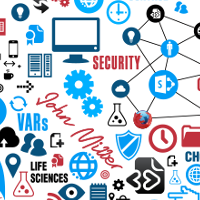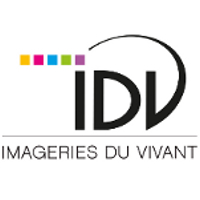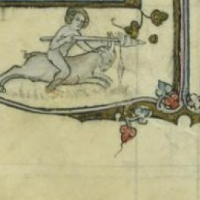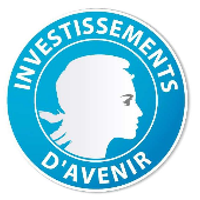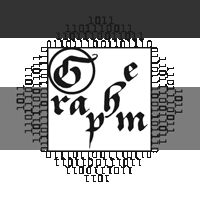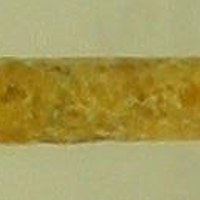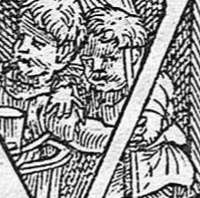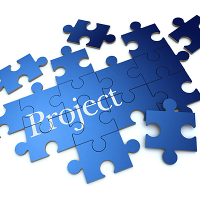Research projects
SHADES (ANR): 2014-2018
Partners: L3i (La Rochelle), CEJEP (La Rochelle), FNTC (Paris), Itesoft (Paris)
The SHADES (Semantic Hash for Advanced Document Electronic Signature) project is an interdisciplinary project dealing with the security of documents involving organizations and researchers both from computer science and law domains. The goal is a graphical analysis of digital image documents in view of the change detection. The main lock is building a signed document that is invariant to changes due to the life cycle of a document, but sensitive to a change in the content. This technological study will be completed by a study on the legal position of this technology and its interest for legal professionals. The project will be conducted in collaboration with a trusted third party as end-user.
View ProjectImageries du Vivant (Programme interdisciplinaire USPC): 2014-2017
Partners: Universités Sorbonne Paris Cité
The IDV (Imageries du Vivant ) project is an interdisciplinary project dealing with life imaging in the broad sense. Imaging is the heart of medicine, psychology and biology but requires upstream intake of physics, chemistry and pharmacy and downstream of mathematics and computer signal processing or image obtained for lead to an interpretation to meet the scientific questions raised. The program IDV focuses on: 1) the animation of a interdisciplinary research network bringing together colleagues and teams working on the generation / acquisition / processing / interpretation of biomedical images at Universités Sorbonne Paris Cité, 2) creation of an environment dedicated to the exploitation of large masses of generated image data (big-data) for the development of innovative imaging biomarkers, 3) a reflection on the ethical and legal problems raised by the exploitation of living images.
View ProjectUsages des patrimoines numérisés (Programme interdisciplinaire USPC): 2014-2017
Partners: Universités Sorbonne Paris Cité
The UDPN (Usages des patrimoines numérisés) project is an interdisciplinary project dealing with the uses of digitized heritage. In recent years, extensive digitization of heritage and cultural content is underway. Born in Universités Sorbonne Paris Cité, the UDPN network will study the changes it causes in the practices and representations. In parallel with this proactive scanning, we can not count the work on constraints (technical, economic, legal) are those of content producers. But few interesting reflections in detail to their users and the uses they are doing; when they exist, they concern an area or a particular discipline. By crossing fields of study and disciplinary approaches, UDPN wants: to observe and describe the current changes in practices and performances, to predict their evolution in the form of alternative scenarios, to undertake a methodological reflection to imagine and design instruments for users and their diverse uses.
View ProjectORIFLAMMS (ANR): 2013-2016
Partners: LIRIS (Lyon), ICAR (Lyon), l'IRHT (Paris), l'école des Chartes (Paris), CESCM (Poitiers) and A2iA (Paris)
ORIFLAMMS stands for Ontology Research, Image Features, Letterform Analysis on Multilingual Medieval Scripts. This project aims to study the writings of the Middle Ages and medieval multilingualism in an interdisciplinary and innovative approach. At the meeting of epistemological, scientific, technological, industrial and societal ORIFLAMMS analyzes the evolution of graphics systems and forms of medieval writings according to their production context (usual entries, diplomatic or bookish) and language (Latin or vernacular). It establishes an ontology of forms and graphical analysis of structures of entries to move from a linear approach (textual) a visual approach to answer the questions linguists, historians and researchers paperwork pattern recognition.
View ProjectPiXL (Investissement d'Avenir): 2012-2015
Partners: L3i (La Rochelle), LIRIS (Lyon), Labri (Bordeaux), Itesoft, I2S and Sood
The PiXL project is related to the Investissement d'Avenir, développement de l'économie numérique "technologies de numérisation et de valorisation des contenus culturels, scientifiques et éducatifs". This center of excellence is aimed at establishing a technology park dematerialization and enhancement of digital content from the service of maps and plans of the BNF.
View ProjectSPIRIT (ANR JCJC): 2011-2015
Partners: Lipade (Paris Descartes)
SPIRIT stands for SPatial Interactions In Textures. SPIRIT is a research project at the junction of image processing and cellular biology, gathering several teams around the texture analysis and simulation issues. Texture modeling is a key fundamental research problem in computer vision and graphics systems. It plays an important role in many important medical imaging applications. Some of these medical imaging applications are based on a specific kind of textures, made of a limited number of distinct elements (cell, fiber structure, etc.). These elements are spatially arranged following patterns that often reflect pathological behaviors. The motivation behind this project is to propose texture models that are able to efficiently capture, describe and simulate the relationships existing between the elements in an image.
View ProjectGraphem (ANR): 2008-2010
Partners: LIRIS (Lyon), l'IRHT (Paris), l'école des Chartes (Paris), and LIFO (Orléans)
The GRAPHEM (Grapheme based Retrieval and Analysis for PaleograpHic Expertise of Middle Age manuscripts) project is a multi-disciplinary project that is based on rich medieval manuscripts corpus. It has two ambitions: (1) to contribute to the creation of a true objective and scientific paleography; to create accurate methods for accessing to the contents of these manuscripts, using word-image similarities (Word Spotting, Word Retrieval). (2) The richness and diversity of the writings (of Latin language) will allow us to elaborate and test shape descriptors that will be used in the two applications. A particular caution will be held on the study of graphemes as pieces of strokes holding relevant information.
View ProjectVisavi (ANR): 2008-2010
Partners: L3i (Paris), l'INRA (Tours) et plusieurs entreprises de fabrication d'aliments pour la volaille
The purpose of the Visavi project is control visual and tactile aspects of food (granules), by means of image analysis. These aspects are often challenged to explain the unwanted behavior poultry, yet who reject food with optimal nutritional characteristics. These incidents give rise to significant negative consequences for the animal for the farmer and the feed supplier, with a major degradation of technical and economic performance. The characteristics of shape, texture and color extracted from granules images constitute effective and practical measures to describe their visual and tactile aspects from specialized sensors. Given the complex nature of this problem, its resolution requires the design and modeling of a complex system, whose inputs are the information extracted images of food, as well as those deducted from measures that characterize the eating behavior of the animals.
View ProjectNavidomass (ANR): 2007-2009
Partners: L3i (La Rochelle), LI (Tours), CESR (Tours), LORIA (Nancy), LITIS (Rouen)
Nanidomass stands for "NAVIgation in DOcument MASSes". There is an increasing interest to digitally preserve and provide access to historical document collections residing in libraries, museums and archives. Such archives of old documents are a unique public asset, forming the collective and evolving memory of our societies. Examples are unique manuscripts written by well known scientists, artists or writers; letters, trade forms or official documents that help to reconstruct historical sequences in a given place or time; artwork elements like stamps, illustrations, covers, etc. The challenge that is currently widespread in Europe is the conversion of such heritage to digital libraries that allow to preserve it but also to make it available worldwide using web-based portals. The field of Data Mining, combined with Document Analysis offers a robust methodological basis to perform tasks such as descriptive modeling (clustering and segmentation), classification, discovering patterns and rules or retrieval by content applied to document sources and databases. This ultimate goal consists in developing Pattern Recognition and Image Analysis techniques that allow extracting knowledge from documents and converting them to Digital Libraries containing the scanned pages enriched with semantical information.
View ProjectWaRRIS (ANR JCJC): 2007-2009
Partners: Laboratoire de Mathématiques Appliquées Paris 5 (MAP5) et l'Unité Signaux et Systèmes de l'École Nationale d'Ingénieurs de Tunis
WaRRIS stands for "WAtermarking Réflexif pour le Renforcement des Images et des Sons". The tattoo (or watermarking) is to insert information into a document (sound, image ...) by an imperceptible alteration of the document. While research in this area are often turned to the security objectives (copyright marks insertion), we propose a different approach, guided by a new use of the tattoo. These define intimately related to the host signal tattoos, containing useful information for restoration, analysis or manipulation of the signal at the output of a degraded communication channel.
View ProjectRIAM-REVES (ANR): 2007-2008
Partners: INRIA Rocquencourt
REVES stands for "REal and Virtual Environment System". We hope to set up a research and development in the field of "augmented reality" adapted to the cinema and culture. This technology relates to all processes that the melt virtual real time AV data (3D images) and actual (motion image). The images are projected on different types, interfaces: virtual glasses, virtual box, screen, objects... They make it, immerse it (or them) user (s) (a group of about ten of, actors or visitors) in a visual world composed of real and virtual images. These features of "augmented reality" could find many applications in many markets: culture, the, information, training, video games, the architecture, the communication of company, e-commerce, , sports training, military simulation, ..
View Project